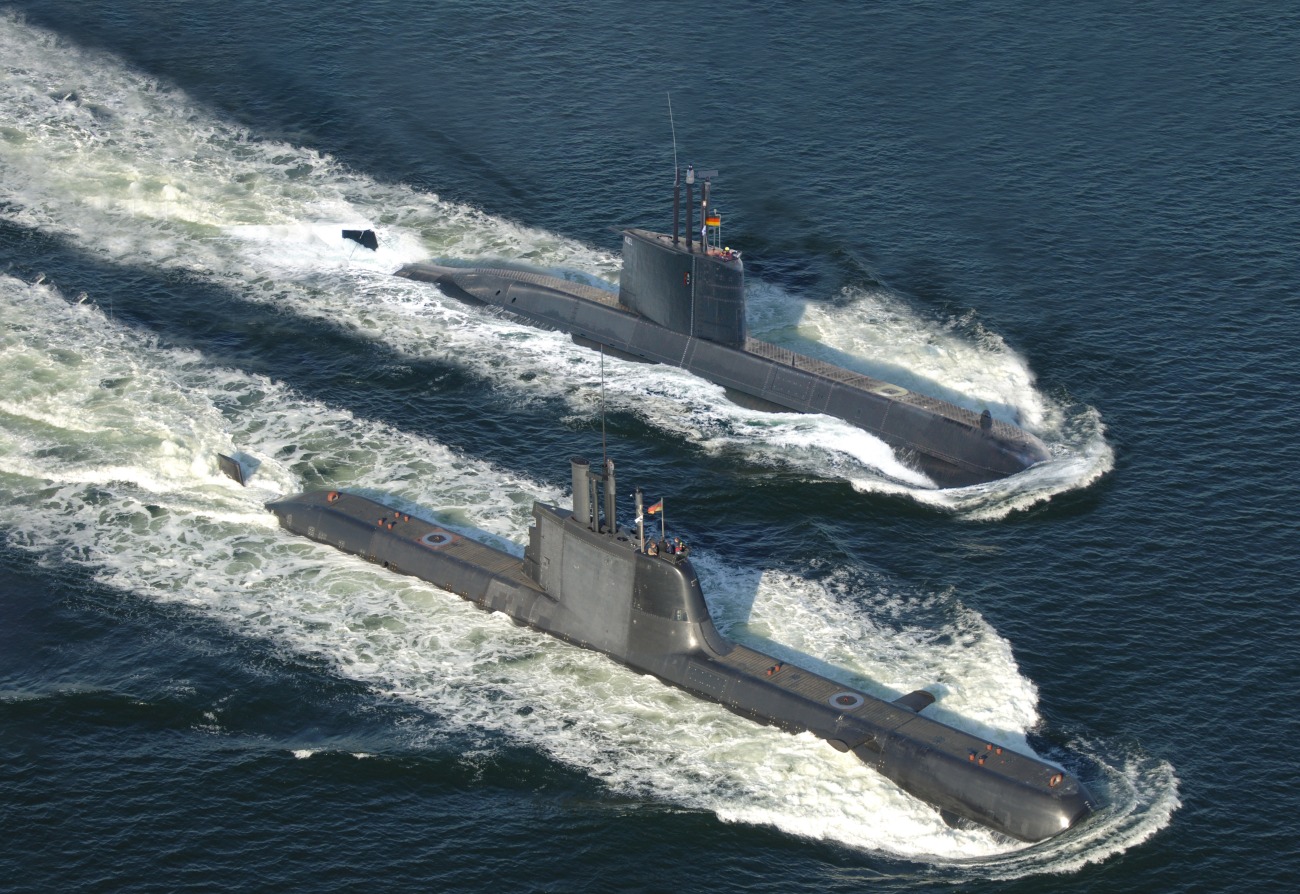German submarine-builder ThyssenKrupp (tKMS) and its Indian partner Mazagaon Dockyard Limited (MDL) have come on top of the field trials conducted by the Indian Navy for the Project-75I for the construction of six submarines with Fuel Cell Air-Independent Propulsion (AIP) technology combined with Lithium-ion battery.
Between March and June, the Indian Navy evaluated the submarines offered by tKMS in Germany and Spanish shipbuilder Navantia in Cartagena. Only one of these companies had proven and validated AIP technology.
Navantia has yet to incorporate the technology into the S80 submarine offered to the Indian Navy. One of the class’s submarines has already been inducted into the Spanish Navy without AIP technology.
The German Navy, in March 2024, provided its submarine for the Indian Navy’s field evaluation. The Indian Navy team went on a day-long diving trial in the 212-class German submarine to evaluate the AIP technology. However, the Navantia field evaluations took place in a simulator.
Navantia has been asserting that its submarine design meets ‘almost’ all the technical requirements of P-75I without any redesign.
Reports indicate that the Indian Navy has communicated to the MDL that it has cleared the crucial field evaluations and has an edge in the tendering process. Also, Navantia’s Indian partners Larsen and Toubro have been informed of the deviations in the trial conducted in Cartagena.
Fuel Cell Air-Independent Propulsion (AIP) technology combined with a Lithium-ion battery gives the submarines the capability to lurk in the ocean depths for a longer duration and, when required, race to their target at high speeds while not giving up their position.
The EurAsian Times learned that efficient energy systems onboard have also been one of the requirements of the Indian Navy.
The results are on expected lines as Navantia has, so far, only completed factory testing of its AIP technology for its S-80 program. During the tests, the Indian Navy evaluated the Navantia system’s performance in a simulated environment that replicated the conditions the system would encounter during actual submarine missions.
The facilities at Cartagena Shipyard allowed for this environment, with capabilities to simulate submarine operations and test entire sections of the submarine.
As MDL and @thyssenkrupp gets a lead in @indiannavy Project-75I, here is a glimpse of 214 class submarine at sea #submarine @THEEURASIATIMES @InsightGL @Chopsyturvey pic.twitter.com/CY1cWHdrJk
— Ritu Sharma (@ritu86sharma) August 12, 2024
The German shipbuilder has offered its 214-class submarines. These combine the advanced technological aspects of 212 CD submarines with the latest developments in AIP technology. The 212 CD class submarines are built exclusively for the Norwegian Navy and are tailored to their operating requirements in the Baltic Sea.
The 214 being offered to India will be tailored to the requirements of the Indian Navy. It will be a derivative of the 214 class of submarines, with the latest enhancements in AIP technology. It will be equipped with a Lithium-ion battery, have an advanced sensor and combat system, and not compromise on stealth features.
When the EurAsian Times visited the tKMS yard in Kiel, Germany, and interviewed Dr. Christian Frühling, the tKMS Program Head for Project-75I, expressed confidence in the technology.
“In this, our big advantage is our unique AIP solution. The submarine design is a derivative of the well-established HDW Class 214 submarine, which is currently in service with several navies worldwide. It will be tailored to the Indian Navy’s requirements and incorporate technological advancements. To summarise our Project-75I design: it is proven, it is advanced, and it is for India,” Dr. Frühling told the EurAsian Times during an exclusive interview.
The tkMS confidence stemmed from the fact that so far it is the only company with sea-proven fuel-cell-based AIP systems. The 214-class submarine is presently being operated by Greece, Portugal, Turkey, and South Korea.

Non-Nuclear AIP-Enabled Submarines
The combination of a fuel-cell-based AIP system and Lithium-Ion battery will bring a game-changing capability for the Indian Navy, which has a long area of responsibility straddling from the Gulf of Aden in the West to the Strait of Malacca in the East. In the face of the growing Chinese maritime capability, the Indian Navy requires a credible submarine force.
The European countries have not been using Lithium-ion batteries, but Japan has been using them. And the tkMS will be integrating the two technologies for the Indian Navy if it bags the contract.
AIP-enabled submarines have increased mobility. They can “bottom” or sit on the ocean floor with only critical systems running to preserve energy and extend the operational time while using passive sonar to detect targets. Since fuel cells operate with greater efficiency at lower loads, bottoming could extend the endurance of a particular mission.
As against the required 24 conventional submarines, the Indian submarine fleet has only 16 submarines, and apart from the six recently-built submarines, the rest are over 30 years old and approaching their decommissioning date. The project, therefore, is expected to be a high-priority project for the Indian Navy.
If MDL bags the Project-75I contract, the submarines will be built in India from the first boat onwards. tkMS will supply the design and critical elements. MDL will be the bidding company for the project, with tkMS as the foreign collaborator. The first submarine will be built around seven years from the date of the contract; thereafter, one submarine can be expected every year.
- Ritu Sharma has been a journalist for over a decade, writing on defense, foreign affairs, and nuclear technology.
- The author can be reached at ritu.sharma (at) mail.com
- Follow EurAsian Times on Google News




